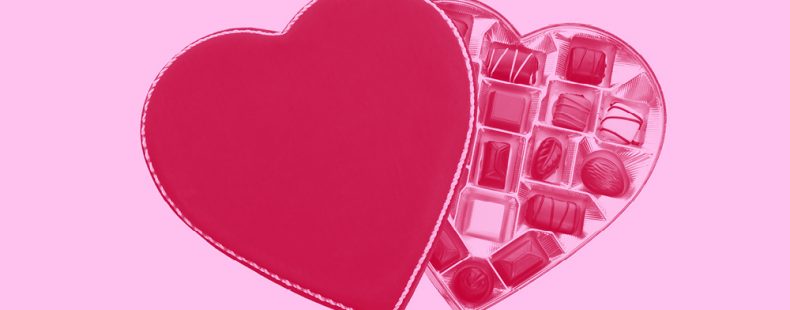You’re minding your own business in the grocery store when—wham! There they are … those pink hearts and candies placed at eye level by merchants reminding you that once again, Valentine’s Day is here.
Why pink? How did pink become so strongly associated with February 14, roses, and romance?
Where does the word pink come from?
The origin of the word pink is notoriously uncertain. The word pink has had many and varied meanings over the centuries, some of which are unrelated to the color. In the 1570s, to pink meant to create a small cut or perforation, such as on a decorated edge (think pinking shears).
As a color, we can find the word pink in mid to late 1500s, originally the name of a type of plant with—you guessed it—pink flowers. This pink may come from a Dutch word.
The Dutch associated pinck oogen, “small eyes,” with the small, delicate flowers of the Dianthus, whose petals look distinctly perforated or crimped. Common names for Dianthus include carnation and pink, which lead to pink’s association with two more ideas: the color of the flower and the idea of the flower as perfection. Perfection is what Shakespeare’s Mercutio is referring to in Romeo and Juliet when he says, “Nay, I am the very pinck of curtesie.”
Pink was the color of … men’s tights?
As pink emerged as a color in Elizabethan England, pink hose were all the fashion for men. Fortunately, sumptuary laws, which determined the color of clothing people wore by their social status, made pink available to both the upper and lower classes.
In the 1920s pink started to be used for the marketing of products for boys. The color was considered appropriate for boys: full of energy, not yet mature enough for the full heat of the color red. Conversely, baby blue was associated with girls as a soft, mild color, and one strongly associated with the Virgin Mary. Post-WWII these associations switched, with pink directed at products for girls and blue for boys.
So why did pink become associated with Valentine’s Day?
Our speculation concludes that a combination of pink as perfection, a tiny flower, and the term for crimping as on Valentine cards created an unstoppable combo.
What do you think? Is the pendulum of pink’s associations swinging back to masculinity? What other associations does pink inspire for you?














